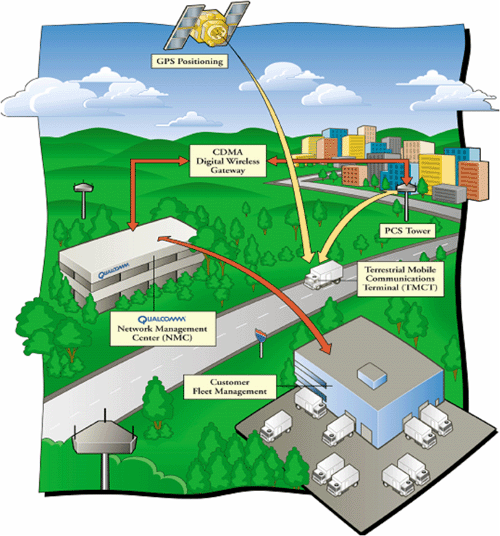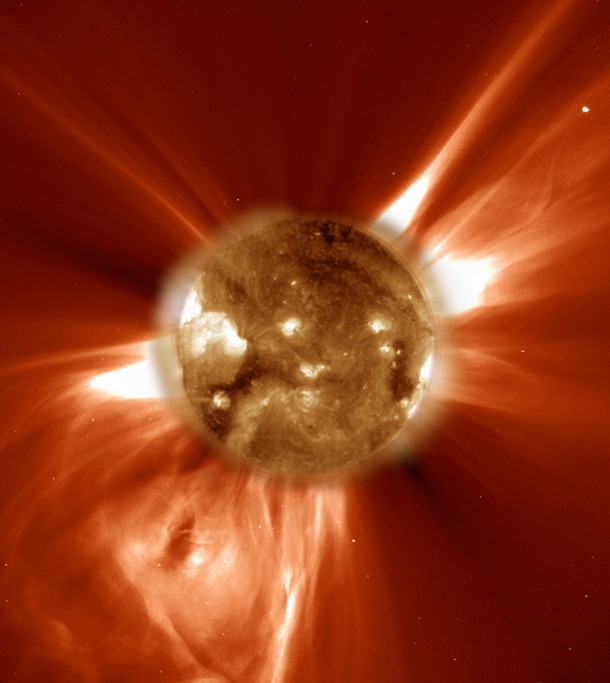
Space weather can affect electrical power grids (Photo: miuenski miuenski via Flickr/Creative Commons)
Stormy weather on the sun could soon wreak havoc on Earth, knocking the world’s power grids off line while damaging communication equipment, satellites, spacecraft and GPS systems, possibly leaving us unable to communicate or transact normal business.
Mike Hapgood, a scientist who specializes in space weather at the Rutherford Appleton Laboratory in England, told Reuters governments around the world are taking threats posed by these solar storms so seriously that they’re putting them on their national risk registers, which are normally used for disaster planning, along with events like tsunamis and volcanic eruption.
“These things may be very rare but when they happen, the consequences can be catastrophic,” Hapgood said.
The sun, just like Earth, has its own weather systems. And, just like on Earth, the sun can have bouts of really stormy conditions from time to time.
The frequency and intensity of these solar weather storms wax and wane throughout an 11-year cycle. Scientists say we’re headed for a period where the sun will be the most active, something they call a ‘solar maximum.’
Thanks to Earth’s protective magnetic fields and our atmosphere, we’re mostly protected from the effects of solar events.
In the United States, the National Oceanic and Atmospheric Administration (NOAA) provides real-time monitoring and forecasting of solar and geophysical events and is the country’s official source of space weather alerts, watches and warnings.
NOAA’s Space Weather Prediction Center (SWPC) is part of the National Weather Service, the component of NOAA that provides weather, water and climate data, as well as forecasts and warnings.
SWPC’s daily forecasts provide the latest space weather information. Warnings and alerts are issued for any potentially-troublesome solar or geophysical conditions.

Satelites, GPS and communications equipment can be hobbled (Image: FMCSA/Dept of Transportation)
With the sun entering its most active phase of the 11-year solar cycle, SWPC ‘s Joe Kunches says those involved in industries and technologies most affected by solar flares and coronal mass ejections should pay close attention to space weather forecasts.
Kunches agrees severe solar events should be added to governments’ national risk registries alongside tsunamis and volcanic eruptions.
“We’ve become so accustomed to electricity and all of the things that are afforded by having a reliable power system, food storage and so on, that if you had a strong and very severe space weather event, probably most people on the ground would have no knowledge of that directly, but they would know in short order when the systems on which they depend aren’t working anymore,” said Kunches.
Video of prominence eruption producing a coronal mass ejection 4/16/12 (Video: NASA)
Kunches joins us this weekend on the radio edition of ”Science World” to discuss potential solar events which could impact our daily lives.
Check out the right column for scheduled air-times or listen to the interview with Ms. Wallace below.
[audio://blogs.voanews.com/science-world/files/2012/08/080312-Science-World-Interview-Space-Weather-Joe-Kunches-NOAA-Space-Weather-Prediction-Center.mp3|titles=081012 Science World Interview – Space Weather – Joe Kunches – NOAA Space Weather Prediction Center – Web]Other stories we cover on the “Science World” radio program this week include:
- US launches dioxin cleanup program in Vietnam
- Curiosity rover’s Mars landing site looks familiar
- WHO: Uganda’s recent Ebola outbreak is now under control
- Volunteers take count of the North American bee population
- Study: pregnant women should get vaccinated for the flu






















So far nothing but scar-mongering.
These reports have beenout for weeks if not months and the reports are useless.
You do know that the first NASA link in this article is from November of 2003, don’t you?
If you want the real and latest data sign-up for it at the Space Weather Prediction Center’s Product Subscription Service.
https://pss.swpc.noaa.gov/LoginWebForm.aspx?ReturnUrl=%2fproductsubscriptionservice%2f